Donetsk oblast
Donetsk oblast [Донецька область; Donetska oblast]. An administrative region in southeastern Ukraine, it is bounded to the south by the Sea of Azov and to the southeast by Rostov oblast of the Russian Federation. Established on 2 July 1932, it was called Stalino oblast until 1961. Its area is 26,500 sq km. The estimated population in 2019 was 4,165,900, of which 90.8 percent or 3,783,400 was urban. The oblast is divided into 18 raions, 52 cities, 131 towns (smt) and 1,115 rural settlements. Donetsk was the oblast’s capital until 2014. After the Euromaidan Revolution, the Russia-curated rebellion in the Donets Basin and the establishment with Russian assistance of the self-proclaimed ‘Donetsk People’s Republic’ with its capital in Donetsk, the administration of Ukraine-controlled Donetsk oblast relocated initially to Mariupol and then to Kramatorsk. Following the Battle of Debaltseve (16–18 January 2015), the Minsk II Agreement (12 February 2015), and Russian-aided separatist capture of Debaltseve (12–20 February 2015), an active front separates the Russia-controlled ‘Donetsk People’s Republic’ from the Ukraine-controlled Donetsk oblast. (Map: Donetsk oblast and DPR; Luhansk oblast and LPR.) The Russo-Ukrainian Donbas war has been impeding links in transport, water, and power infrastructure.
Physical geography. Donetsk oblast consists of an undulating plain dissected by river valleys, ravines, and gullies. Its northeastern third lies within the Donets River Basin; the western third drains west to the Dnipro River and the southeastern third south to the Sea of Azov. The eastern part consists of the Donets Ridge (up to 350 m in elevation). In the west the ridge meets the Dnipro Lowland and in the south, the Azov Upland (elevation up to 265 m), which slopes southward and changes into the Azov Lowland. The climate of Donetsk oblast is temperate-continental, with hot summers (average temperature: 20.8°C in the north to 22.8°C in the south; absolute maximum, 38°C) and cold winters (average temperature: –4.0°C in the south to –6.8°C in the north; absolute minimum, –38°C in the north). The growing season, with temperature over 10°C, may last for 165–180 days of the year, but frost-free season ranges from 160 days in the north to 200 days in the south. Annual precipitation is 450–550 mm. In spring dry winds (sukhovii) and dust storms are frequent. The largest river of the region is the Donets River, with its tributaries the Kazennyi Torets River, the Bakhmutka River, and the Luhan River on the right bank and the Zherebets River on the left. The Samara River and Vovcha River flow into the Dnipro River. The Kalmiius River, Hruzkyi Yelanchyk River, and Krynka River (a tributary of the Miius River) run south into the Sea of Azov. Many rivers dry up in the summer. To supply the population and industry with water, a series of water reservoirs and the Donets-Donbas Canal were constructed. The soils are mostly ordinary chernozems with average (in the north) to low (in the south) humus content. Slightly solonized chernozems and saline soils (solontsi) are found on the coast of the Sea of Azov. Donetsk oblast lies in the steppe belt. Deciduous forests and wooded ravines are common on the Donets Ridge, and pine woods grow on the sandy soils of the low left bank of the Donets River. Forests, thickets, and shelterbelts cover 7 percent of the oblast’s territory.
History. The oblast’s territory has been inhabited since the Paleolithic Period (see, for example, Amvrosiivka archeological site). In antiquity, it was part of the domain of the Cimmerians (8th century BC), the Scythians (7th–3rd centuries BC), the Sarmatians (3rd century BC–230 AD), and the Alans (a Sarmatian tribe, 200–550 AD), and transited by the Huns (250–375 AD) and the Avars (550). The Alans were then displaced northward by the Onogurs or Ogurs (a proto-Bulgarian Turkic-speaking people), who lived here from the 6th to 9th centuries AD. The territory was part of the Khazar Kaganate in the 8th century. When the princes of Kyivan Rus’ (most notably, Sviatoslav I Ihorovych) suppressed the Khazar domination and tried to control this region, the Onogurs were displaced by the invading Pechenegs (9th–11th centuries), then the Polovtsians or Cumans (11th–13th centuries), and the Mongol-Tatars of the Golden Horde (13th–15th centuries). In the mid-15th century the Crimean Khanate, having separated from the Golden Horde, initially claimed the southwestern half of this depopulated territory and then encroached onto the northeastern half of the weakened Astrakhan Khanate. The Kyiv principality, at that time part of the Grand Duchy of Lithuania, claimed the northwestern part of this region. After Muscovy conquered Astrakhan (in 1556), it claimed the northeastern part, while the Crimean Khanate retained the southwestern part.
In the late 16th and early 17th centuries, the Zaporozhian Cossacks, on their Azov campaigns (1570, 1637) to the Don River, penetrated this contested, dangerous borderland. In the mid-17th century, they began to colonize this area, creating the Kalmiius Cossack Sloboda. After the Cossacks helped capture the Turkish fortress of Oziv (1696), Muscovy extended its claim to the Sea of Azov and established Azov gubernia, of which this territory became a part. Following the Battle of Poltava (1709) and then the Prut Treaty of 1711, Russia relinquished this gain to the Ottoman Empire. The Zaporizhia, then vassal of the Ottoman Porte, extended its two provinces, the Samara palanka and the Kalmiius palanka, into all but the northeastern tenth of present-day Donetsk oblast, which was part of the Russia-controlled Slobidska Ukraine. In the southeast the Zaporozhian Cossacks added the Yelanets palanka that extended from the Kalmiius River to the mouth of the Don. When the Russian Empire regained this territory (following the Treaty of Belgrade in 1739), the Zaporozhia became Russia’s protectorate, retaining Samara and Kalmiius palankas but losing the Yelanets palanka to the Don Cossack Host.
In the 18th century colonization of this region accelerated following the restructuring of the territorial administration. In the northeast, then part of the Voronezh gubernia, a colony of invited Serbs, Bulgarians, Macedonians, and Wallachians from the Austrian Empire formed a belt of settlements called Sloviano-Serbia (1753). This belt was combined in 1764 with other similar belts of military settlements (such as the New Serbia) to form the New Russia gubernia. The Liquidation of the Zaporozhian Sich in 1775 ended the existence of the Samara and Kalmiius palankas, resulting in the expansion of the New Russia gubernia onto the entire territory of the former Zaporizhia, including the western half of present-day Donetsk oblast. Russian gentry were granted Cossack lands and settled there together with Ukrainian and Russian serfs. German colonists were attracted with grants of free land and freedom of religion. Greeks were forcibly resettled from the Crimea to the Kalmiius River (1774-83), where they built Mariupol. The eastern half, allocated to the Don Cossack Host (1776), was part of the renewed Azov gubernia until 1783. When the New Russia gubernia was replaced (1783) by Katerynoslav vicegerency, it retained the western and gained the northeastern part of present-day Donetsk oblast. The northeastern and western parts remained in the renewed and enlarged New Russia gubernia (1796) and, after its division (in 1802) into three gubernias, they remained within the Katerynoslav gubernia until 1920. The strip of land east of the Kalmiius River remained with the Oblast of the Don Cossack Host.
By the mid-19th century, rural colonization was replaced by industrialization and urbanization. The discovery of coal (1723) and exploration of the Donets Coal Basin (Donbas) led to coal mining and the development of metallurgy, which accelerated after the Crimean War (1853–6) and the emancipation of the serfs (1861). Owners of factories and their specialists in the Donets Basin were often foreigners. Some miners and industrial workers came from local villages, but most were ethnic Russians. The growth of cities and trade attracted Jews from the western provinces of the Russian Empire. By the end of the 19th century this added a stratum of ethnically diverse, Russian-speaking workers.
During Ukraine’s struggle for independence (1917-20) the territory was claimed as part of the Ukrainian National Republic (UNR), but reneged by Russia, occupied by German and Austrian forces, and after their withdrawal contested among the UNR Army, the Red Army, the Ukrainian anarchists (Nestor Makhno; see Partisan movement in Ukraine, 1918–22), and the anti-Bolshevik Volunteer Army. The Bolsheviks, unable to sustain their Soviet Ukrainian People’s Republic headed by the Kharkiv-based People's Secretariat (December 1917–March 1918), tried to create an alternate Donets–Kryvyi Rih Soviet Republic (February–March 1918), and then established the Ukrainian Socialist Soviet Republic (January 1919, renewed January 1920) and within it the Donetsk gubernia (5 February 1919), expanding it after 16 April 1920 to include not only all of present-day Donetsk oblast but also Luhansk oblast and part of Rostov oblast (today in the Russian Federation). After some border re-adjustments (1920, 1925), the Ukrainian Soviet Socialist Republic was re-structured into the system of okruhas (1923–6), of which the Artemivsk (see Bakhmut), Stalino, and Mariupol okruhas corresponded to the present-day Donetsk oblast; the Starobilsk and Luhansk okruhas (1925) formed what is the present-day Luhansk oblast. All five okruhas were merged in 1932 into the larger Donetsk oblast. In 1938 the latter was split into Stalin (presently Donetsk) oblast and Voroshylovhrad (presently Luhansk) oblast.
Population. Donetsk, the most populous oblast in Ukraine, accounts for one-tenth of the country’s population. Its average population density is 157 people per sq km, the highest of any oblast in Ukraine. Within the Donets Basin, a conurbation of mining towns and industrial cities, the density increases to 300 and over, while in the south it falls to 40 or less. The percentage of urban population, the highest in Ukraine, has been increasing until 1990: it was 78.7 percent in 1940, 77.1 percent in 1950, 85.8 percent in 1960, 87.4 percent in 1970, 89.3 percent in 1980, and 90.4 percent in 1990. Subsequently it rose very slowly: 90.2 percent in 2000, 90.5 percent in 2010 and 90.8 percent in 2019. The population suffered two calamities from which it recovered, partly with immigration from central Russia: from the Famine-Genocide of 1932–3, to 3,235,000 in 1940, and from the Second World War, to 2,997,000 in 1950. It continued to grow to 4,342,000 in 1960, 4,894,000 in 1970, 5,191,900 in 1980, and 5,339,200 in 1990, peaked at 5,365,800 in 1993 and then declined to 4,953,400 in 2000, 4,466,700 in 2010 and 4,165,900 in 2019. Contributing to population growth was high in-migration and average but declining natural increase (8.6 per 1000 in 1965, 6.3 per 1000 in 1970, and 4.5 per 1000 in 1975). Deaths began to exceed births in 1989 among the aging rural population (–1.8 per 1000), from where youth migrated to cities, and then in 1990 among both urban (–1.0 per 1000) and rural (–3.3 per 1000) population. The onset of natural decrease, however, was delayed until 1992 by net in-migration (36,400), the largest among the oblasts, into urban areas. Historically, in-migration considerably exceeded out-migration, but decreased since the 1960s. In 1993 out-migration began to exceed in-migration (–1,600), contributing to population decline in subsequent years. Net out-migration from Donetsk oblast exceeded all of the oblasts of Ukraine where net out-migration was observed, and was augmented by the stream of refugees fleeing the Russo-Ukrainian war after 2014.
After the Crimea, Donetsk oblast has the lowest proportion of Ukrainians and the highest proportion of Russians in Ukraine. Changes in the ethnic composition of the oblast’s population attest to the Russification, reversed with Ukraine’s independence after 1991. The 2001 figures (with 1959 and 1989 in parentheses) were: Ukrainians, 56.9 (55.5, 50.7) percent; Russians, 38.2 (37.6, 43.6) percent; Greeks, 1.61 (2.19, 1.58) percent; Belarusians, 0.92 (1.48, 1.45) percent; Crimean Tatars, 0.40 (0.58, 0.48) percent; and Jews, 0.18 (0.99, 0.53) percent. Armenians, who made up 0.33 percent of the population (0.19 percent in 1989), were refugees from Azerbaijan.
As a result of industrialization, urban clusters have formed at coal mine sites in the Donets Basin. The three largest are 1) Donetsk–Makiivka, 2) Horlivka–Yenakiieve, and 3) Kramatorsk–Kostiantynivka. The smaller ones include 4) Chystiakove–Snizhne and 5) Pokrovsk–Myrnohrad. The largest cities in 2019 (population census, 2001, in brackets) are listed, in descending order of size, by clusters: 1) Donetsk (formerly Aleksandrivka, 1779–1869, Yuzivka, 1869–1924, Stalin, 1924–9, and Stalino, 1929–61), 920,000 (1,025,000), is bordered to the east by Makiivka, 379,000 (431,000); 2) Horlivka, 258,000 (312,000), is bounded to the southeast by Yenakiieve, 106,000 (163,000), and to the northwest by Toretsk (Shcherbynivka, 1810–1938, Dzerzhynsk, 1938–2015), 68,000 (86,000); 3) Kramatorsk, 187,000 (216,000), is flanked to the north by Sloviansk, 111,000 (143,000), to the southwest by Druzhkivka, 66,000 (75,000), to the southeast by Kostiantynivka, 71,000 (95,000), and farther to the east by Bakhmut (Artemivsk, 1924–2015), 75,000 (114,000); 4) Chystiakove (Torez, 1964–2016), 78,000 (96,000), with Snizhne, 69,000 (83,000), to the east, and Shakhtarsk, 60,000 (73,000), to the west; and 5) Pokrovsk (Hryshyne, 1875–1934, Postysheve, 1934–8, Krasnoarmiiske, 1938–62, Krasnoarmiisk, 1938–2016), 74,000 (83,000) alongside Myrnohrad (Shakhty imeny Dmytrova, 1938–65, Dmytrov, 1965–2016), 50,000 (57,000), to the east. The second largest city, Mariupol, 458,000 (511,000), stands alone in the south of the oblast, an industrial port on the Sea of Azov.
Since 2015, the Russia-controlled Donetsk People’s Republic (DPR) holds about 8,400 sq km or 31.7 percent of the oblast’s territory. It extends from the border of the Russian Federation west to the Kalmiius River and includes major cities of the 1) Donetsk–Makiivka and 2) Horlivka–Yenakiieve and all of the 4) Chystiakove–Snizhne clusters. The remaining 3) Kramatorsk–Kostiantynivka and 5) Pokrovsk–Myrnohrad clusters, the city of Mariupol and areas to the west and north are in the Ukraine-controlled Donetsk oblast. Of the 4,153,000 estimated permanent population of Donetsk oblast in 2019, 2,220,500 or 53.5 percent resided in the DPR.
Many technical professionals were trained in educational institutions in Donetsk oblast. In 2007, Donetsk oblast had 62 postsecondary schools and colleges offering professional and vocational education with 52,800 registered students, and 27 universities, academies, and institutes of technology with 161,700 students. The principal institutions were concentrated in Donetsk but in 2014 the pro-Ukraine faculty relocated to safety and established alternate campuses in other regions of Ukraine. The Donetsk National University is now located in Vinnytsia, with a branch campus in Mariupol, but the science labs and their researchers remained in Donetsk; the Donetsk National Technical University is now in Pokrovsk, Donetsk oblast; the Donetsk National Medical University is now in Kramatorsk and Kropyvnytskyi, with branch campuses in Donetsk oblast at Mariupol and Lyman; the Donetsk State Music Academy is now in Kyiv; the Donetsk National University of Economics and Trade is now in Kryvyi Rih, with branch campuses in Donetsk oblast at Kramatorsk and Mariupol; and the Donetsk State University of Management is now in Mariupol. Other important institutions are located—in Mariupol: the Mariupol State University, the Pryazovskyi State Technical University (formerly the Mariupol Metallurgical Institute), the Sea of Azov Institute of the Odesa Sea Academy National University; in Kramatorsk, the Donbas State Machine-Building Academy, the Donbas National Academy of Building and Architecture; in Makiivka: the Donbas National Academy of Civil Engineering and Architecure; in Horlivka: the Horlivka State Pedagogical Institute of Foreign Languages; and in Sloviansk: the Sloviansk Pedagogical University, and the Institute of Applied Mathematics and Mechanics of the National Academy of Sciences of Ukraine. By 2018, in the Ukraine-controlled Donetsk oblast there remained only 19 postsecondary vocational schools and colleges with 7,700 registered students, and 9 universities, academies, and institutes of technology with 24,900 students.
Economy. Donetsk oblast is Ukraine’s leading industrial region based on outstanding mineral resources, a developed transportation network and a strong agricultural component. With a territory occupying 4.4 percent and a population representing 9.7 percent (2010) of Ukraine’s total, its gross regional product in 2004–13 (before the Russian Federation’s annexation of the Crimea) gradually declined from 13.3 percent in 2006 (the highest of any oblast in Ukraine) to 10.8 percent in 2013, still ahead of the next contributor, Dnipropetrovsk oblast. Its share of fixed assets in 2009 in all enterprises of Ukraine was 11 percent (the highest of any oblast in Ukraine), in industry, 23 percent (by far the highest of any oblast), and in agriculture, 5.3 percent (above average). In 2018, the gross regional product of Donetsk oblast controlled by Ukraine contributed 5.4 percent to Ukraine’s total. To the gross regional product of Donetsk oblast, industry contributed 50 percent, trade 8 percent, agriculture 7 percent, financial services 6 percent, and transport and communications 10 percent.
Donetsk oblast can be divided into two economic-geographical regions, northern and southern. The northern region is a part of the Donets Basin. It is highly industrialized (noted for its heavy industry) and has a suburban agriculture. In the southern region, along the Sea of Azov coast, agriculture (grain and oil-yielding crops, dairy and meat animals, and fish) is still important. Mariupol, with its heavy industry, is the main industrial center in the south.
Industry. Donetsk oblast is one of the most developed industrial regions of Ukraine. It contains the principal mining and metallurgical complex of Ukraine. After 1917 a varied machine building and tool-making industry developed. The oblast is a large producer of energy and has strong chemical industry, construction industry, and food industry. In 2013 (1970 in brackets) it produced 49.5 (52.7) percent of Ukraine’s bituminous coal, 44.3 (44.4) percent of its cast iron, 42.3 (42.5) percent of its steel, and 26.9 (47) percent of its rolled steel. Industry reached its peak in the 1980s, stagnated in 1990 and was privatized after 1991. While light industry declined, the service sector, including trade, financial services, transport and communications, has grown in importance. The industrial profile of Donetsk oblast (excluding the Russia-controlled Donetsk People’s Republic) in 2018, as percent of the total value of industrial production, was: metallurgy, 42.6 percent; mining, 19.8; energy supply, 14.3; machine-building, 4.7; food and beverage, 3.5; all other, 15.1 percent. The industrial products of the oblast are exported to some 80 countries. The top four clients in 2009, as percent of all exports, were: the Russian Federation (14.7), Turkey (8.3), Kazakhstan (6.6), and Italy (6.0). After the outset of the Donbas war in 2014, the Russian Federation is no longer a major client of the Ukraine-controlled Donetsk oblast.
The industrial development of Donetsk oblast is based on the huge deposits of high-quality hard coal (anthracite and coking coals) in the Donbas. Reserves are estimated at 40 billion t. The best seams, however, have been exhausted; the remaining thin, steeply sloping and deep deposits are costly to extract, resulting in declining output. Refractory clays (several deposits west of Druzhkivka) are important to smelting. Rich deposits of industrial rock salt at Bakhmut (see Bakhmut rock salt deposits) and Sloviansk (see Sloviansk rock salt deposits) support the chemical industry. Mykytivka hosts the only mercury deposit (see Mykytivka mercury deposit) in Ukraine. Deposits of titanium ore and rare earths are also present. Large deposits (estimated 3 trillion cubic meters) of shale gas around Sloviansk were assessed by 2011, which could be recovered by fracking, but Shell has backed out because of the Donbas war.
Mining accounts for about 20 percent of the industrial production of the oblast. The oblast ranks first in Ukraine in coal extraction. It produced 106 million t (68 percent) in 1970, down to 32 million t (50 percent) in 2013 and in the Ukraine-controlled part 10.1 million t (38 percent) in 2018. There are 29 enrichment plants, located mostly in the Donetsk–Makiivka and the Horlivka–Yenakiieve industrial regions but also near Pokrovsk, Chystiakove, and Selydove. The other branches of the mining industry contributed (in 2013) 61 percent of Ukraine’s production of rock salt, about one-half of refractory clays and graphite, and 29 percent of kaolin clay and lime for flux.
Electric power is based on local coal and partly on imported gas and oil. Thermal stations generate electricity at Kurakhove (since 1941, 1,400 MW capacity in 2018), Sloviansk (1951, 800 MW), Kramatorsk (1937, 120 MW); the Zuivska TES-1 (1932 until mid-1990s, when it was called ZuTES–1, then decommissioned and turned into an educational facility) and its more powerful successor, Zuivska TES (1982, 1,270 MW, formerly called ZuHRES–2), both at Zuhres; Starobeshivska TES (1958, 2,300 MW) at Novyi Svit: Myronivska TES (1953, 275 MW, closed due to the Donbas war) at Myronivka and its neighbor, Vuhlehirska TES (the largest in Europe, 3,600 MW) at Svitlodarsk. These stations formed the largest electrical network in Ukraine, called Donbasenerho. Now they are privatized, the largest belonging to DTEK Corporation.
Thirty-five percent of the oblast’s industrial production consists of ferrous metals. The metallurgical industry operates using local coke, iron ore from the Kryvyi Rih Iron-ore Basin, and enriched manganese ore from the Nikopol Manganese Basin. It developed in the 19th century, expanded in the 1930s, and modernized in the 1970s. The main centers of ferrous metallurgy are in: Donetsk (the Donetsk Metallurgical Plant, established in 1872); Makiivka (the Makiivka Metallurgical Plant, 1899), a pipe plant, and in nearby Khartsyzk a steel wire plant; Yenakiieve (the Yenakiieve Metallurgical Plant, 1897); Kramatorsk (the Kramatorsk Metallurgical Plant, 1932), and two heavy machine-building plants, for mining and railways (1896) and metallurgy equipment (1932); and Kostiantynivka, with its metallurgical plant (1897) and glass-making factory. The two giant plants in Mariupol (the Mariupol Metallurgical Plant, 1897, and the Mariupol Azovstal Metallurgical Plant, 1933), located at tidewater to obtain enriched iron ore from Kerch in the Crimea, produce quality steel, including armour plate. Iron smelters use refractory products, such as dolomite and lime, from plants in Kostiantynivka, Krasnoarmiiske, Chasiv Yar, Dokuchaievsk, Horlivka, and Yama. The largest plants of non-ferrous metallurgy produce copper and brass in Bakhmut (est. 1950), aluminum, copper and brass in Donetsk, zinc in Kostiantynivka (1930), and mercury in Horlivka (1886).
The construction of heavy machinery for mining and metallurgy, transportation equipment, and chemical equipment occupies an important place in the industry of Donetsk oblast. The largest machine-building plants are in Horlivka (1895, tunneling machines and plough systems, destroyed in 2014), Kramatorsk (New Kramatorsk Machine Building Plant, 1941, heavy duty machines for mining, metallurgy, and machine tools), two in Mariupol (Mariupol Heavy Machine Building Plant, formerly Azovmash, 1958, railway tanker freight cars and transport equipment, and Lozova Forging-Mechanical Plant, 1966, hot forged workpieces for transmissions and chassis), Donetsk (Donetsk Machine-building Plant, 1889, stationary coal mine equipment), Druzhkivka (Druzhkivka Machine Building Plant, 1893, mining equipment, power roof supports), Debaltseve (Mechanical Factory, 1894, foundry equipment), Yasynuvata (Yasynuvata Machine Building Plant, 1947, construction and mining machinery), and two in Sloviansk (Sloviansk Heavy Machine Plant, equipment for chemical and coke production, and Betonmash Machine Plant, concrete mixing equipment).
The coke and chemical industries, which are closely linked with ferrous metallurgy and coal mining, have grown greatly, particularly those producing sulfuric acid and nitric acid, mineral fertilizers (Horlivka), plastics (Donetsk, Mariupol, Kramatorsk, Sloviansk), and synthetic rubber (Donetsk, Mariupol). The largest coke-chemical works are in Avdiivka, Donetsk, Horlivka, Makiivka, Mariupol, and Yenakiieve. The main chemical plants are the Styrol Chemical Complex in Horlivka (1933), the phosphate complex in Kostiantynivka (1897), the soda complex in Sloviansk (1898), and explosives and organic chemicals in Donetsk (1916). Pharmaceuticals are produced in Bakhmut and Makiivka and paints in Donetsk and Kramatorsk.
In the building-materials industry, Donetsk oblast is a leading producer. Its output of Portland cement, however, declined from the first-ranking 5.3 million tons (30.6 percent of Ukraine’s production) in 1970, to 4.4 million tons (19.6 percent, still first) in 1990, 0.92 million tons (12.1 percent, fourth after Dnipropetrovsk oblast, Khmelnytsky oblast, and Kharkiv oblast) by 1995, and 0.85 million tons (8.9 percent) in 2013. Cement is produced in Amvrosiivka (see Amvrosiivka Cement Complex), Kramatorsk and Yenakiieve and fiber cement in Makiivka. Precast reinforced concrete is fabricated widely (Donetsk, Makiivka, Novyi Svit, Chystiakove, Hirnyk, Selydove, Avdiivka, Chasiv Yar, and Myronivka). Lime (Cherkaske and Mariupol), plaster products (Bakhmut and Soledar), brick (Bakhmut, Mariupol), and cut stone (Shakhtarsk) are also produced. Technical glass is made in Kostiantynivka (see Kostiantynivka Avtosklo Plant).
Light manufacturing, particularly the textile industry (cotton and woolen mills in Donetsk, cotton in Makiivka), clothing industry in all major cities, and footwear industry (Donetsk, Mariupol, Bakhmut, Kramatorsk), was well developed by the 1970s but declined severely in the 1990s. Personal industrial equipment, like miner respirators, was produced in Donetsk.
Household appliances industry (Donetsk, Krasnohorivka, Novohrodivka, Druzhkivka) expanded in the 1970s but declined in the 1990s. Electronics developed in Donetsk by Topaz JSC with military applications of radio signal suppression (‘Liman’) and radar guidance (‘Kolchuga’), are now in the Russian-controlled DPR.
Wood-working, paper-making, and the polygraph industry are present in the oblast. One of the largest pencil factories in Ukraine is located in Sloviansk.
The food industry makes meat products (the largest, in descending order, are in Donetsk, Yenakiieve, Kostiantynivka, Makiivka, Bakhmut, Horlivka, Snizhne, Kramatorsk and Manhush near Mariupol), dairy products (the largest are in Donetsk and Bakhmut, smaller in Kramatorsk, Horlivka, Yenakiieve, and Mariupol), confectioneries (in every major city), beer (Donetsk), wine (Bakhmut, Donetsk), distilled alcoholic beverages (Bakhmut, Donetsk, Makiivka, Yenakiieve) processed fish (Mariupol), and fruit and vegetables (Lyman). Major sunflower oil extracting centers include Sloviansk, Kramatorsk, and Mariupol, with extracting and refining in Donetsk.
Agriculture. Agriculture in Donetsk oblast is intensive and diverse. The central, most industrialized part of the oblast specializes in fruit farming and vegetable growing, orcharding, and meat- and dairy-cattle raising. In the southern and western raions mainly grain and meat cattle are produced. Donetsk oblast is one of three top producers of fruit and berries in Ukraine. It contributed (in 2007) the 7th largest share (5.1 percent) of Ukraine’s agricultural production by value, ranking seventh (4.8 percent) in crop production but fourth (5.5 percent) in animal husbandry. As in all of Ukraine, since 1991 the animal husbandry component declined in favor of the more lucrative crops for export.
Collective farms and state farms were replaced, after 1991, by commercial family farms, farming associations and corporate farms, based mainly on renting farmland. Whereas in 1985 there were 277 collective farms and 149 state farms in the oblast, they were replaced by 2009 with 2,144 agricultural enterprises of different types: 1,610 commercial family farms, 310 farm corporations, 79 private farm enterprises, 12 farm co-operatives, 5 state farms and 128 other farming enterprises. Rural households, however, continue to practice subsistence gardening and subsidiary animal husbandry.
Of the total land area (2,651,700 ha) of Donetsk oblast, 2,056,800 ha (77.6 percent) were farmed in 1971. Crops occupied 1,681,300 ha (63.4 percent of the total land area), hayfields, 16,500 ha (0.6 percent), pastures, 285,600 ha (10.8 percent), orchards and berry patches, 83,800 ha (3.2 percent), of which 67,500 ha (2.5 percent) were of fruit-bearing age, and vineyards, 2,800 ha (0.1 percent), of which 2,500 ha were of fruit-bearing age. By 1990 farmland decreased to 2,030,200 ha (76.6 percent) as it was lost to mining or other uses, reaching 1,918,700 ha (72.3 percent) in 2000 and 1,661,400 ha (62.7 percent) in 2006, when some farming enterprises abandoned operations, but then resumed for a total of 1,778,200 ha (67.1 percent) by 2009. Cropland also declined to 1,528,700 ha (57.6 percent of the total land area) in 1990 and 1,386.300 ha (52.3 percent) in 2000, stabilizing at 1,429,600 ha (53.9 percent) in 2006 and 1,422,500 ha (53.6 percent) in 2009. Hayfields and pastures decreased to 293,000 ha (11.0 percent) by 1986, and 280,000 ha (10.6 percent) by 1993, rising to 282,000 ha (10.6 percent) in 1995 and 295,000 ha (11.1 percent) by 1998. Orchards and berry patches in their fruit-bearing age, however, declined continuously to 41,600 ha (1.6 percent) in 1990, 17,000 ha (0.6 percent) in 2000, and 10,400 ha (0.4 percent) in 2007. Likewise, vineyards in fruit-bearing age declined to 600 ha in 1990, 400 ha in 2000 and remained at 400 ha by 2007.
Crop areas and their composition changed over time. The total area sown in Donetsk oblast increased from 1,525,900 ha in 1971 to 1,529,000 ha in 1986, declining after 1991 to 1,468,000 ha in 1994, 1,427,600 ha in 2007 and 1,411,500 ha in 2013. The shares of crop categories, expressed as percent of the total sown area in each of the five years, respectively, changed as follows: grain for export, after a dip during farm restructuring (1992–6), regained predominance by 2007 (46.7, 50.4, 41.2, 52.1, 56.4); the main industrial crop, sunflower, gained a boost after 1996 (11.1, 9.9, 11.8, 27.8, 30.9); feed crops dropped precipitously with reduced domestic livestock after 1996 (35.6, 33.9, 40.7, 11.5, 7.1); potatoes, vegetables, and melons increased moderately (5.8, 5.9, 6.2, 6.9, 6.5).
The main grains grown in 1971 and in 2007, in hectares (and percentage of total sown area, in brackets) were: winter wheat, 142,000 ha (9.3 percent) and 321,900 ha (22.5 percent); spring barley, 278,700 ha (18.3 percent) and 232,200 ha (16.3 percent); and corn for grain, 216,800 ha (14.2 percent) and 82,800 ha (5.8 percent). Legumes, buckwheat, and millet were also grown.
Because of its climate, grain yields in Donetsk oblast are more variable and slightly lower than average for Ukraine. The average grain yield in 1970–5 was 24 centners per ha; the average for winter wheat was 28.1; for potatoes, 77; for sunflowers, 17.3, the highest in Ukraine. After 2007 most crop yields increased. The 12-year average (2008–19) grain yield was 29 centners per ha; potatoes, 124; sunflowers, however, remained at 17.2.
Among the oblasts of Ukraine, in 2007 Donetsk oblast ranked fourth (5.5 percent of Ukraine’s total, by value) in the output of animal products. It was second (after Kyiv oblast) in the production of eggs (1.3 billion, 9.4 percent of Ukraine’s output), fifth in both meat (105,700 tons, 5.5 percent) and wool (147 tons, 4.3 percent), but only 17th in milk (404,600 tons, 3.3 percent). Cattle, hogs, sheep, and poultry are raised both on a large scale and on individual plots. At the beginning of 1975 there were 1,076,800 head of cattle (406,800 cows), 950,000 hogs, and 283,000 sheep and goats in the oblast. Animal numbers have declined steeply since 1991 and continued to decline thereafter. Cattle declined from 1,066,00 at the end of 1990 to 179,600 by the end of 2007 and 127,800 by the end of 2013, of which cows, respectively, 378,100, 85,600, and 65,100 cows; hogs, from 978,300 to 351,100 and then partly recovered to 579,000 hogs; and sheep and goats, from 282,500 to 78,600 and 81,700 sheep and goats. Poultry declined the least, from 17.0 million to 11.0 million and 13.4 million at the end of 2013. The Red Steppe cattle, the Great White hog, and the Tsigai sheep are the prevalent animal breeds. Fishing is important along the Sea of Azov coast.
Transportation. Donetsk oblast has one of the densest railway networks in Ukraine: 60.0 km per 1,000 sq km in 2009. The length of track in general use in 1978 was 1,976 km, declining to 1,655 km in 1990 and 1,591 km in 2009. The three main railway lines, now double-tracked and electrified, are: 1) the first (1869) Moscow–Donbas link (Moscow–Kharkiv–Lozova–Sloviansk–Horlivka) with extension through Makiivka and Ilovaisk to Tahanrih and Rostov-na-Donu 2) the Donbas–Dnipro regions’ coal–iron-ore link (since 1881) (Mariupol–Donetsk–Yasynuvata–Chaplyne–Dnipro–Piatykhatky), from where it branches off to Kryvyi Rih and to Kyiv, respectively; and 3) the second Moscow–Donbas link from Kharkiv, added before 1914, now double tracked and electrified, (Kharkiv–Zmiiv–Lyman–Bakhmut–Horlivka–Debaltseve) with extensions to Luhansk and to other coal-mining towns. The other two important lines are: 4) the second Donbas–Dnipro regions’ link, added before 1914 (now double-tracked but not electrified) (Volnovakha–Kamysh-Zoria–Zaporizhia) and 5) the third Moscow link added in 1940 (now double-tracked but not electrified) (Moscow–Lipetsk–Valuiky–Kupiansk–Lysychansk–Popasna–Debaltseve), which also connects from Kupiansk to Kharkiv. The largest railway junctions are Yasynuvata, Mykytivka, Debaltseve, Lyman, Ilovaisk, and Volnovakha. There were 8,200 km of highways in 1979, of which 7,100 km were paved; by 2000 the network was trimmed to 8,000 km of highways, all of which were paved. The main highways are Kharkiv–Kostiantynivka–Bakhmut–Debaltseve–Antratsyt–Rostov-na-Donu (M-03, severed since 2014 northwest of Debaltseve), the Dnipro–Pokrovsk–Selydove–Donetsk–Debaltseve–Luhansk–Volgograd (M-04, severed since 2014 northwest of Donetsk), the old Bakhmut–Donetsk–Mariupol highway with new sections (severed since 2014) north and south of Donetsk, and the coastal highway Kherson–Melitopol–Berdiansk–Mariupol–Novoazovsk–Tahanrih–Rostov-na-Donu (M-14, severed since 2014 east of Mariupol).
Pipelines bring natural gas from the Krasnodar krai of the Russian Federation to Donetsk, Mariupol, and other cities, and from Kharkiv oblast, where the Soiuz mainline from Orenburg, Russian Federation, supplements gas to the pipeline through Sloviansk to the rest of Donetsk oblast. An oil pipeline crosses the northern part of Donetsk oblast from Saratov, Russian Federation, to Kremenchuk.
In Mariupol on the coast of the Sea of Azov there is a large seaport. International airports were located at Donetsk (new terminal built in 2011, destroyed in a siege in 2014) and at Mariupol (closed in 2014 due to the Russo-Ukrainian Donbas war); Kramatorsk has a former military airfield, which was targeted and damaged by Russian forces in 2015.
Tourism. In Soviet times Donetsk oblast was a ‘closed’ region to which foreign tourists were not admitted. Since 1991, it was opened up to international tourism. Donetsk hosted numerous international events, notably co-hosting the 2012 UEFA European Football Championship. The oblast has significant cultural attractions, notably in Donetsk (many institutions, sports facilities, libraries, museums, theaters of drama and ballet, and philharmonic orchestra, a circus, a planetarium, botanical gardens, many large parks, Soviet-era monuments and the Second World War memorials), Mariupol (art, ethnographic and regional studies museums, drama theater), Horlivka (art, historical and mining museums), Bakhmut (regional studies and geology museums, and an underground ‘Champagne’ winery in a gypsum mine), Kramatorsk (numerous institutions, Donetsk Art Museum, historical museum), Kostiantynivka (regional studies museum), and Sloviansk (regional studies museum). Historic sites include the Sviati Hory Dormition Monatery at Sviatohirsk, overlooking the Donets River.
Natural attractions include the Sviati Hory National Nature Park (est. 1997, 40,609 ha) of forests along Donets River, the Meotyda National Nature Park (est. 2009, 20,720 ha) of the Sea of Azov coastal steppe and beaches, the Kramatorsk Regional Landscape Park, three sites of the Ukrainian Steppe Nature Reserve (est. 1925, 3,336 ha): the Kamiani Mohyly Nature Reserve, Khomutivskyi Steppe, and Chalk Flora (Kreidova Flora), and the Druzhkivka petrified forest. Rest and recreational facilities were developed primarily to serve the needs of workers and children. A network of resorts (345 in 1995, reduced to 226 by 2013), sanatoria (120 in 1995, reduced to 46 by 2013), and facilities for children (494 in 2000, increased to 1,093 in 2013) are located primarily in the vicinity of the Donets River near Slovianohirsk, the metropolis of Donetsk and along the coast of the Sea of Azov near Mariupol. Tourism in Donetsk oblast reached its peak in 2008, with 155,869 clients served by tourist agencies, of which 90,571 were foreign. In 2011 there were 494 hotels in the oblast, accommodating 410,028 visitors.
BIBLIOGRAPHY
Zemliak, K.; Krytenko, H. Krai Donets'kyi (Kyiv 1959)
Omel'ianovich, V. Prirodnye resursy Donetskoi oblasti (Donetsk 1963)
Donetskaia oblast' za 50 let: Statisticheskii sbornik (Donetsk 1967)
Istoriia mist i sil Ukraïns'koï RSR: Donets'ka oblast' (Kyiv 1970)
Donetskaia oblast' za tri goda desiatoi piatiletki: Statisticheskii sbornik (Donetsk 1978)
‘Donets'ka oblast'’ in Heohrafichna entsyklopediia Ukrainy. 1 tom (Kyiv 1989)
Pirko, V. Zaselennia Donechchyny XVI–XVIII st. (Donetsk 2003)
Natsional'nyi atlas Ukrainy (Kyiv 2007)
Chukhlib, T. Donechchyna ta Luhanshchyna – kozats'ki zemli Ukraïny (XVI–XVIII st.) (Kyiv 2014)
Loza, Iu. Istorychnyi atlas Ukraïny (Kyiv 2015)
‘Donets'ka oblast'’ Statystychnyi atlas rehioniv Ukraïny (Kyiv 2018) http://www.ukrstat.gov.ua/
Ihor Stebelsky
[A new version of this article was written in 2020.]
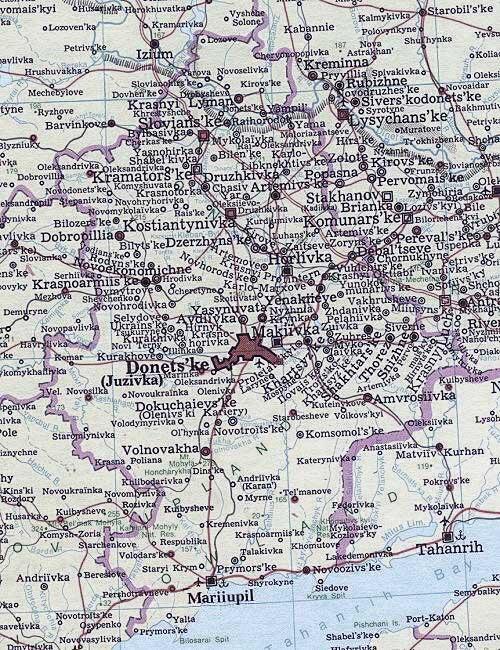
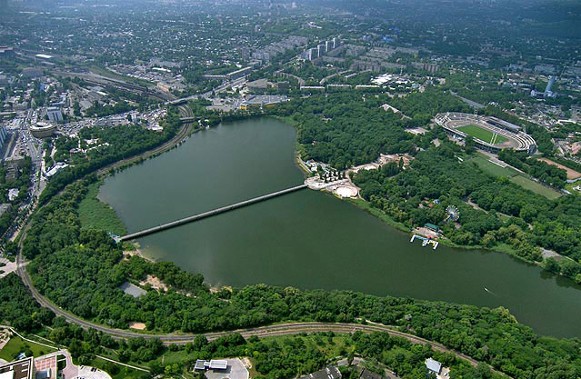
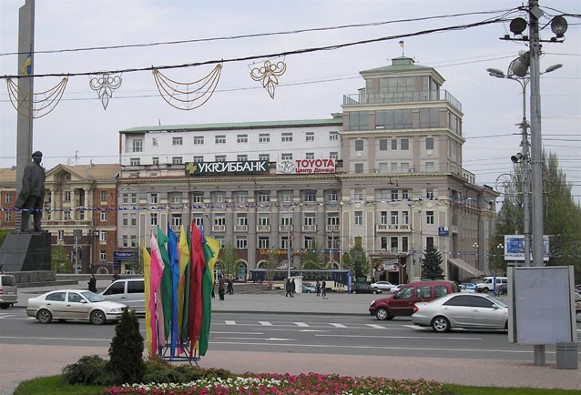
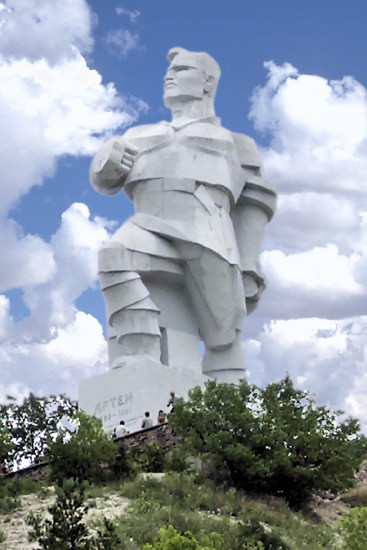
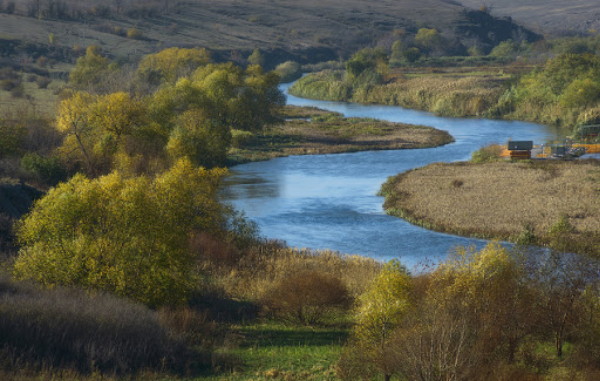
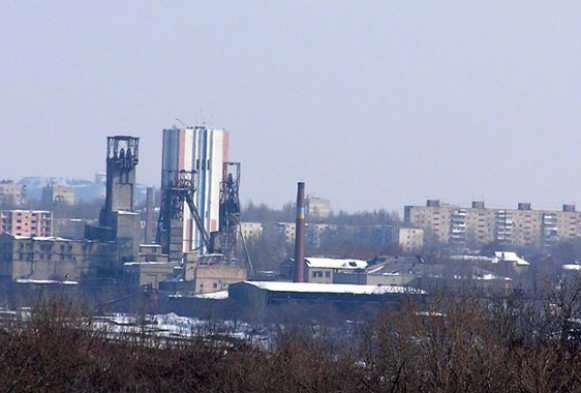
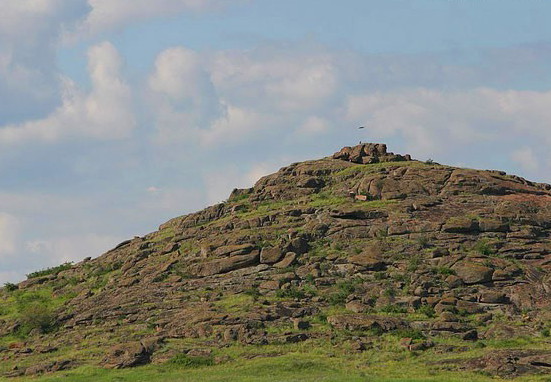
.jpg)
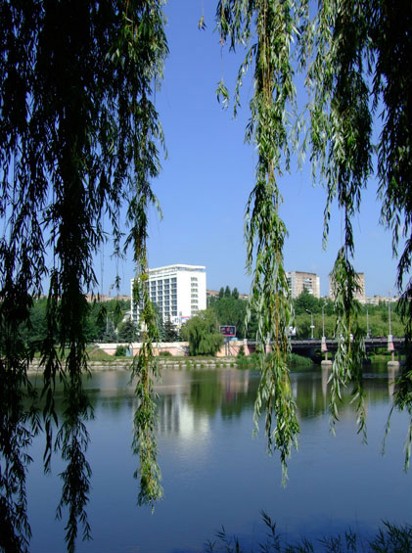
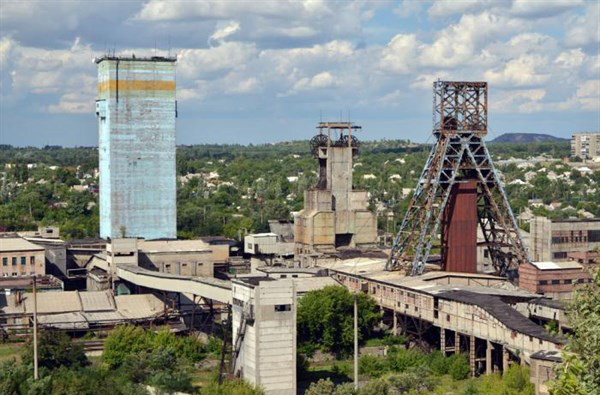
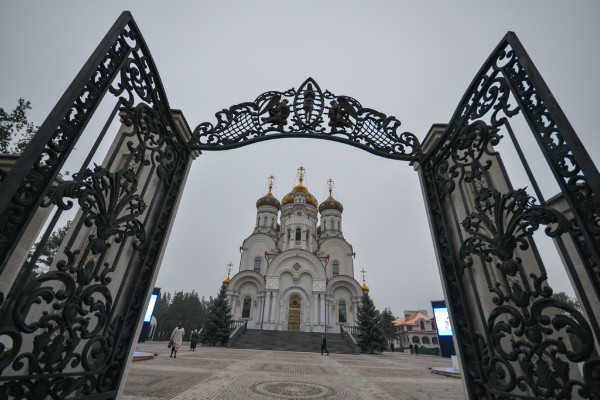
.jpg)
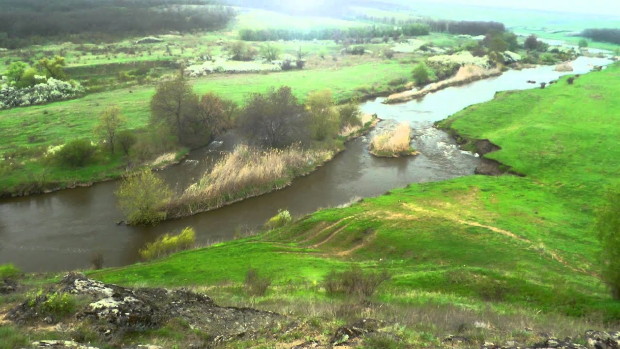
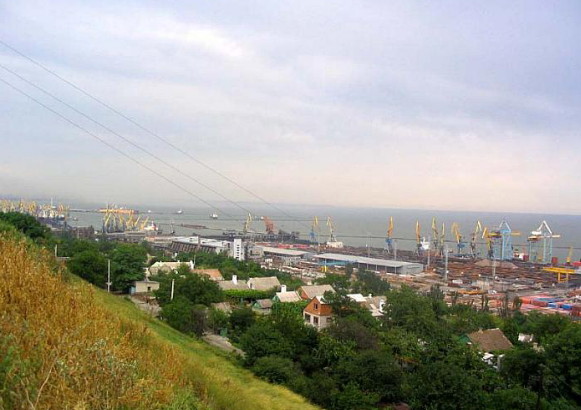
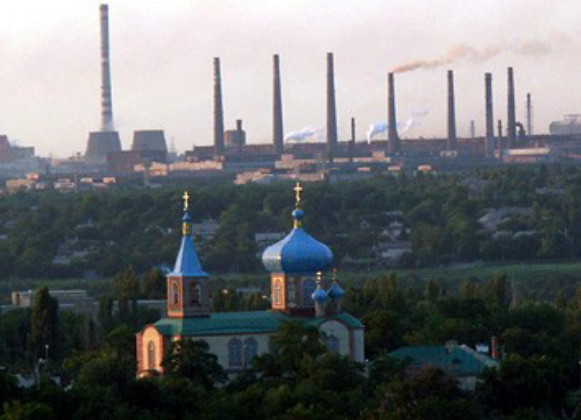
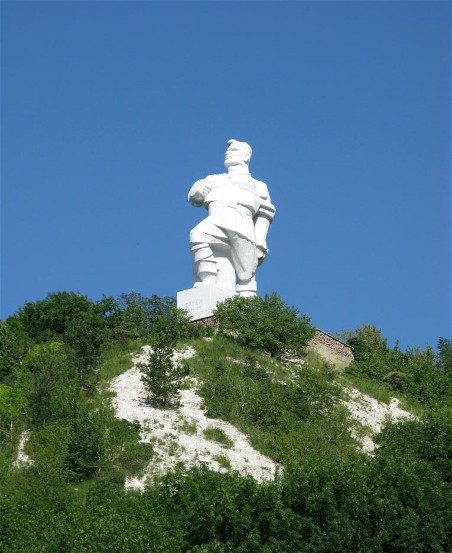
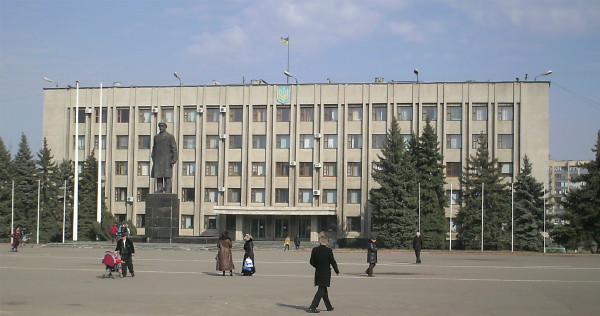
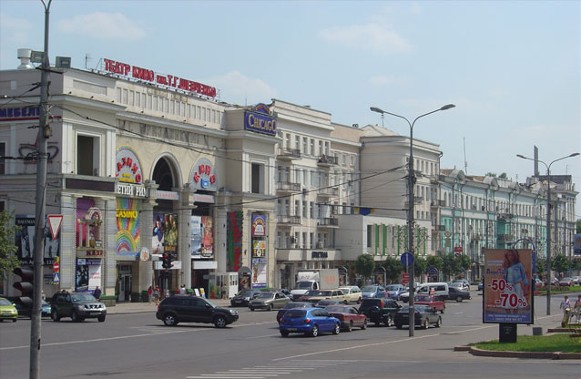
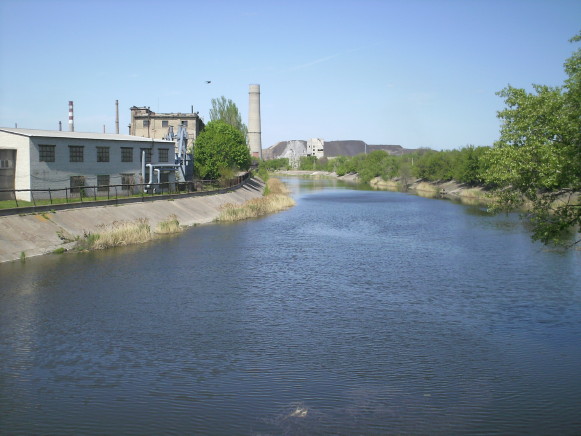
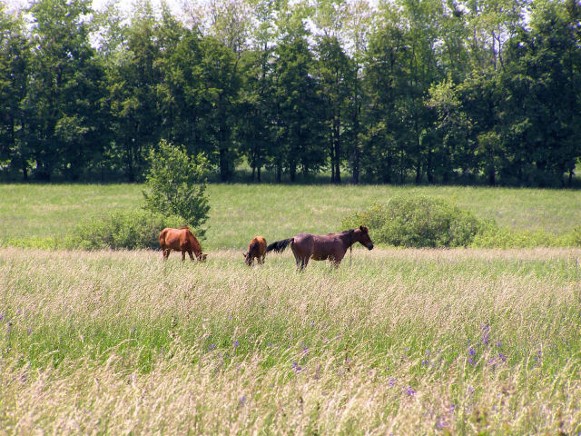
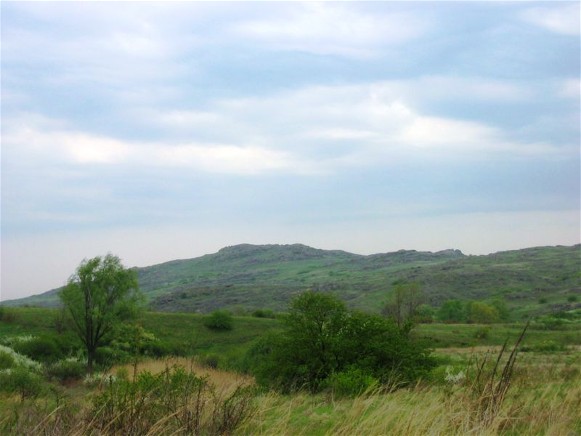
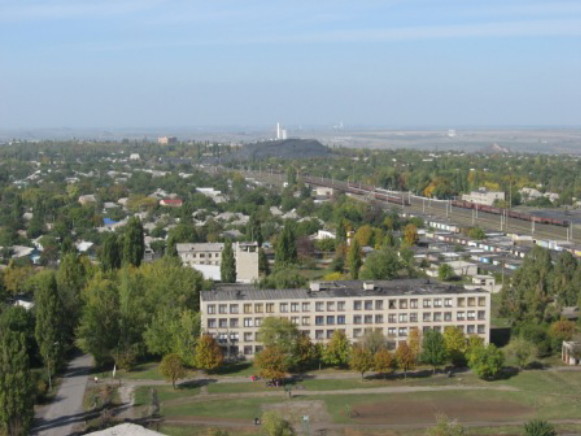
.jpg)
